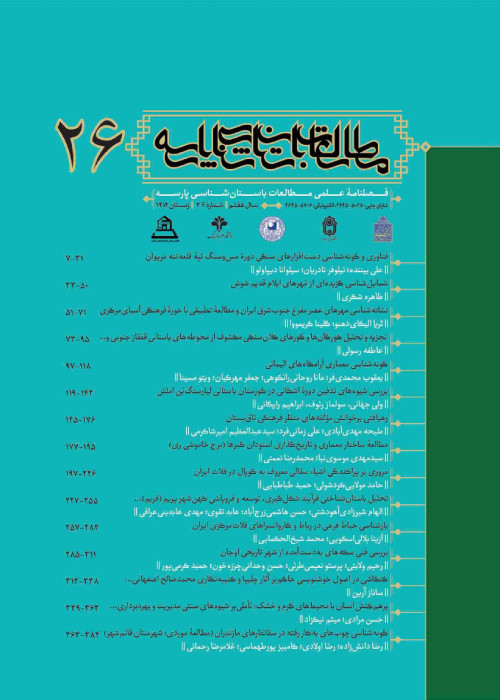Spinning, A Manifestation of the Components of the Endogenous Livelihood Economy of Semi-Unilateral Establishment Sheep Communities (Case Study: Spindle Whorls Discovered from Fxcavation Poshteh-Forodgah Tepe)
Spindle Whorls are among the main cultural materials and needs of animal husbandry and semi-”frozen” societies and are among the works that are directly related to the pattern of livelihood and production in the clothing family and fibers of early societies. to be. Which are interpreted in the analysis of the findings of ancient sites. The area behind Malayer Plain Poshteh-Forodgah Tepe is no exception to this feature, and the number of 123 Spindle Whorls found among its archaeological excavation findings has a significant presence in terms of type and f. The main stones of this area can be divided into two groups: convex and conical, each of which is divided into two sub-branches: painted and simple, and in terms of quality of construction, they can be divided into two groups: medium and Roughly divided. All Spindle Whorls are made of baked clay with a mixture of herbs and in different sizes. The purpose of this research is in the first stage, typology and study of saddles and in the second stage, analysis of livelihood model related to the production of textiles in the hills posht forodgah. A significant number of Poshteh-Forodgah Tepe and its application in the production of yarn by analyzing it on the produced fibers and how to organize this production can help a lot. The method of the present research, based on comparative studies and with a descriptive-analytical approach, seeks to answer these questions: What kind and forms of hymns discovered Poshteh-Forodgah Tepe and what threads are used in its production? Given the Semi-Unilateral of the Tepe communities Poshteh-Forodgah Tepe and the abundance of Sardok, the production of textiles in this area has been for local and domestic use and trans-regional trade? Considering the Semi-Unilateral and nomadic settlement and the method of economic production based on animal husbandry in the early communities of the Central Zagros and the hills Poshteh-Forodgah Tepe, it seems that based on the variety of mounds in type of material, quality of species, shape and size, these wool fibers They are mainly used for local use and trade outside the region to meet basic needs.
- حق عضویت دریافتی صرف حمایت از نشریات عضو و نگهداری، تکمیل و توسعه مگیران میشود.
- پرداخت حق اشتراک و دانلود مقالات اجازه بازنشر آن در سایر رسانههای چاپی و دیجیتال را به کاربر نمیدهد.



